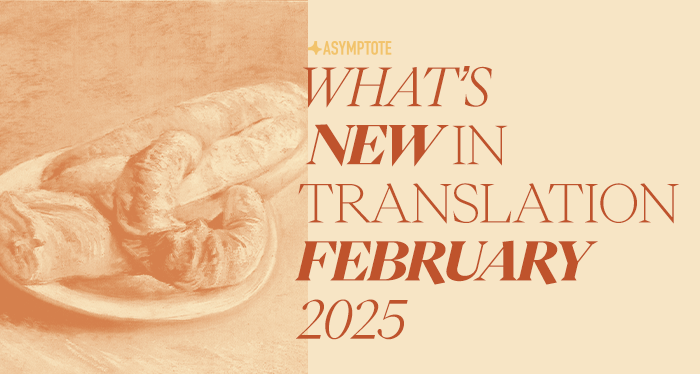In this month’s round-up of recent translations, we present eleven titles from Japan, Iraq, Colombia, Indonesia, Austria, Ukraine, Italy, Spain, Sweden, and Slovenia. From neorealist postwar fiction to the graphic novel, stories capturing the tides of time and the turbulent eras of violence, narratives of migration and mystery, innovations of the short fiction form and unconventional looks into classic tales . . . these titles are invitations into hidden places and profound sights, stark realities and dreamy visions.

A Perfect Day to be Alone by Nanae Aoyama, translated from the Japanese by Jesse Kirkwood, Other Press, 2025
Review by Rosalia Ignatova
Nanae Aoyama’s short novel, A Perfect Day to Be Alone, is the English-language debut of its lauded young author, offering a delicate exploration of existential drift through the eyes of Chizu, a restless twenty-year-old, and Ginko, her elderly relative who takes her in for a year. While the narrative is sparse on action, it is rich in atmospheric detail, focusing on the quiet moments that shape their unlikely cohabitation.
The story unfolds as a series of understated interactions, from Chizu’s aimless relationships and lackluster part-time jobs to Ginko’s steady, self-sufficient existence. Aoyama excels at capturing the textures of these two lives: the aimlessness of youth juxtaposed with the pragmatic contentment of old age, and the interplay between the two—often defined by casual conversations and understated observations—reveals both contrasts and unexpected parallels. While Chizu’s thoughts and remarks indicate a world marked by rudeness, kleptomania, and emotional detachment, her inertia and spitefulness will ring familiar to anyone who has felt paralyzed by indecision during their early adulthood: “I feel like maybe I should use up all my sadness now while I’m young. So, I don’t end up all miserable when I’m old.” Ginko, by contrast, is a portrait of quiet resilience. At seventy-one, she embodies an unhurried pragmatism, providing neither transformative advice nor overt maternal warmth.
Aoyama’s novel reminded me of Kim Ki-duk’s cinematic masterpiece Spring, Summer, Fall, Winter. . . and Spring, which follows an older monk and a young boy, living together in an isolated setting. Both works follow a seasonal, cyclical rhythm, but while the novice in the film achieves a sense of spiritual clarity by the end, Chizu’s journey remains more ambiguous—the open conclusion leaves her grappling with uncertainty, without any neatly packaged wisdom or resolution. Aoyama thus captures the nature of young adulthood with an immediacy and integrity that leads us to a liminal space, where the future looms uncertain and self-understanding remains elusive.
A Perfect Day to Be Alone certainly demands patience and an appreciation for the mundane. Yet for those willing to embrace its quiet rhythm, they will be rewarded with an evocative meditation on youth, aging, and all the spaces in between.
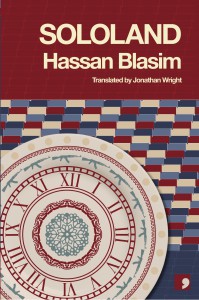
Sololand by Hassan Blasim, translated from the Arabic by Jonathan Wright, Comma Press, 2025
Review by Xiao Yue Shan
Throughout the three novellas that make up Hassan Blasim’s Sololand, any attempt at deciphering reality requires some magical thinking. Amidst the rabid sectarian conflict of “Elias in the Land of ISIS,” a young woman tells the titular protagonist: “Trust your imagination. It’s your most loyal friend.” In “The Law of Sololand,” the narrator wonders to himself in the aftermath of a cataclysmal event: “Is it violence alone that brings about real change in our world? Only those whose imaginations have wings can answer this question.” And when a refugee in “Bulbul” finally writes the story of his life, he admits the frailty of his attempt: “In the end, the book, like any book in the world, even an autobiography, was a work of imagination. Isn’t that what the critics say?”
Parsed through Jonathan Wright’s intuitive translation of Iraqi Arabic, imagination is a strange ordeal in Blasim’s work. Blasim’s narrators are constantly wrestling with a disintegrating social fabric, confronting that impossible obstacle where individual sense meets societal senselessness. A young Yezidi boy from ISIS-controlled Mosul is forcibly taken in by the militia, sequestered in the headquarters, and made to witness endless tragedies, from enslaved women and young recruits, doomed local leaders and international hostages. A sympathetic migrant attempts to help newly arriving refugees, only to have his good will met by disgust. A daydreamer’s eyes are slowly opened to corruption. As horror malforms the shape of everyday life, Sololand sees the mind continuing to reach out, to set the present into chronology and history. Imagination here is not fantastic escapism or mental sanctuary; it is the scaffolding that holds up the too-vast, too-fractured, and too-chaotic world.
When writing a postcolonial gothic of Iraq, Blasim’s style is precise and tempered, describing the horrors without hysteria or sentiment, resisting the dramatic flourish that would turn suffering into spectacle. In relating the refugee’s psyche, however, all the tension and pain comes to the surface—confused, emotionally fraught, and seething: “. . . I was increasingly afraid that I might end up standing there, alone, exposed, naked in the face of many cruel truths about human beings, which have barely changed throughout history.” To decipher the hidden face of a nation, the writing has an assurance that belies its author’s own experience, but when turning to the life of the individual, Blasim gives in to a certain desperation. The author acknowledges that literature is capable of representation, but remains uncertain as to whether or not his readers are imaginative enough to connect representation to reality.
Facing a Western movement that increasingly demands a waiving of compassion for the sake of property and presumed social order, Blasim makes it clear: we are capable of living in a system of exclusion. We can take pleasure in it, we can dwell in our luck, we can even express occasional compassion for those whom we reject from safety and opportunity. The only consequence is that we shall reduce our reality until it is but a tiny fragment. We will banish every narrative, every account, every testimony that proposes an alternative way of thinking, of being. We will shut imagination away, preferring darkness. We will be blind, deaf, crowded in a vacuum of our own self-involvement. And eventually, we will forget that there even is a world.
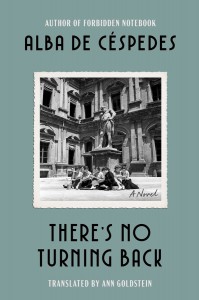
There’s No Turning Back by Alba de Céspedes, translated from the Italian by Ann Goldstein, Washington Square Press (US)/Pushkin Press (UK), 2025
Review by Marcel Krueger
It may be a sign of the times, but the Anglosphere has seen an increasing number of Italian neorealist writing—works pertaining to Fascist society in Mussolini’s Italy leading up to 1939, and detailing the challenges of war, resistance, and reconstruction that followed. There is Natalia Ginzburg’s essay collection The Little Virtues, translated by Dick Davis and published in 2018; Cesare Pavese’s war and postwar novels The House on the Hill and The Moon and The Bonfires, both translated by Tim Parks and published in 2021; and also Howard Curtis’s revised 2023 translation of Beppe Fernoglio’s partisan novella, A Private Affair. Alba de Céspedes’s first novel, originally published in 1938, is a fine addition to this array.
De Céspedes (1911-1997) is one of the most important authors of twentieth century Italian literature. Her main oeuvre, built in the aftermath of 1945, often features strong female voices, and books like Her Side of the Story and Forbidden Notebook have also become bestsellers in Italy, inspiring authors such as Annie Ernaux and Elena Ferrante.
There’s No Turning Back, her first novel, is now finally available in a fluid translation by Ann Goldstein, who is also the translator of Forbidden Notebook. The narrative follows eight young women at the Grimaldi college in Rome from 1934 to 1936, and de Céspedes portraits the society of Fascist Italy through their individual stories. Each is given a distinct voice, with their unique ambitions and choices leading them on different paths, and the first-person perspective shifts from character to character throughout. Emanuela, for example, has a child out of wedlock with a young pilot of the Italian Air Force; when he later dies in an accident, her family forces her to give the child up. Vinca is Spanish, and her boyfriend Luis goes to fight for the Fascist side in the Spanish Civil War while she continues to study. Xenia fails her exams and sets out to become a self-made woman, working as a secretary and sales assistant.
Because of its captivating female-centric narrative, the book was an instant commercial and critical success. It’s not difficult to see why; despite the hardship they experience, all the characters shine as strong, independent women willing to face whatever the future brings. “What we’ve left behind we don’t look back at. What awaits us is still enveloped in fog. We don’t know what we’ll find when the fog clears,” Silvia tells her classmates on the last Christmas they spend together at the Grimaldi. No wonder that the Fascist regime, which propagated an extremely conservative image of women as solely mothers and wives, had tried in vain to ban the novel.

The Stolen Heart by Andrey Kurkov, translated from the Russian by Boris Dralyuk, MacLehose Press, 2025
Review by Eamon McGrath
Andrey Kurkov’s Kyiv in The Stolen Heart is a relative oasis amid the many warring factions fighting for control of Ukraine in 1919, but it is also a city in limbo; Bolshevik forces have taken control of the city and are working to impose the new Soviet order. Caught up in this chaos is Samson Kolecho, a police detective whose life is caught up between the old ways and the new.
The second installment in Kurkov’s Kyiv Mysteries series, The Stolen Heart reprises several characters and plot points from its preceding novel, retold via flashback in Samson’s narration (this includes Samson’s severed ear, through which he can still magically eavesdrop on conversations). As a historical mystery with some elements of heightened melodrama, Kurkov writes with humor and compassion about the pure-hearted Samson. His marriage in The Stolen Heart brings “half-childish fears mingled with purely youthful expectations of miraculous happiness in his heart.” At times, Samson’s well-meaning naïveté and deference to authorities evokes Jaroslav Hašek’s Švejk.
The novel resembles a series of mini adventures, including the kidnapping of Samson’s girlfriend, a series of petty thefts from the police station, and the disappearance of a Red Army soldier. The ostensible throughline is a Kafkaesque investigation into a merchant accused of unknowingly violating a new decree by the “ExProFooCom,” which bans the private trade of meat, but the investigation—never a priority for Samson—quickly derails into absurdist argument over which organs constitute meat.
Samson reacts passively to the imposition of such new edicts as a flurry of new rules and customs are enacted in newly Sovietized Kyiv—a city of food vouchers, competing currencies, constant patrols, and everyday subterfuge by its many colorful residents. Some changes appear to be for the better, but Red Army soldiers and menacing Chekists have begun to exert ever-more control over the city: “The times were growing more and more alarming—so alarming that no-one wanted to talk about them.”
Although he seems relatively unschooled in the workings of this new world, Samson imagines Bolshevik rule as just the latest phase in Kyiv’s turbulent history. A photographer advises him not to wear his current police uniform for a photo shoot: “Better not to immortalise yourself in an outfit linked to a specific government. Who knows what’s coming tomorrow?” As readers well know, the absurdities and injustices of Soviet rule are there to stay—at least for some time. Meanwhile, Samson’s next mystery awaits.
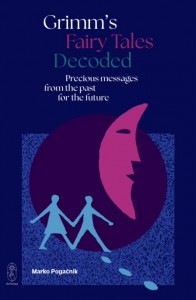
Grimm’s Fairy Tales Decoded by Marko Pogacnik, translated from the Slovene by Tadej Turnšek and Rahel Ries, Istros Books, 2025
Review by Rosalia Ignatova
In Grimm’s Fairy Tales Decoded, Marko Poganik offers an unconventional perspective on the brothers’ classic stories. While I initially expected a structured, analytical approach—as in, let’s say, Vladimir Propp’s Morphology of the Folktale—his interpretation ventures into more esoteric territory, at times proving a challenge to follow. Leaning heavily into New Age concepts (Gaia, Earth wisdom, energy pathways), Poganik mostly treats these stories as repositories of archetypal wisdom, layered with meanings that connect human consciousness to the natural and spiritual worlds. For readers interested in this kind of exploration, the book may prove fascinating—but those looking for a more scholarly analysis might be unconvinced.
Take Poganik’s discussion of Hansel and Gretel, for instance; he sees the story as a metaphor for humanity’s lost spiritual connection and as an initiation into life’s mysteries, suggesting that ancient ways of gaining knowledge—through nature and wise elders—have been blocked by societal changes. The stepmother here represents the patriarchal distortion of the nurturing Mother of Life, prioritizing survival over communal care, and Hansel’s reliance on white pebbles, which shine in the moonlight, symbolizes the guidance of ancestors and spiritual beings. When the children are abandoned for the second time, Poganik reads the breadcrumbs as representing a decline in reliable spiritual guidance, with the birds (denoting nature or fate) removing this guiding path.
The figure of the witch is interpreted within the historical context of the European witch hunts, thus representing something far more complex than simple antagonism. While this idea is intriguing, it makes Gretel’s bravery in defeating the witch—arguably one of the most significant moments—read like an act of misguided violence towards a wise old woman. The perspective is thought-provoking, but it also felt like a sidestepping of the story’s core emotional and narrative weight as we know it today.
Still, Poganik’s artistic background allows him to conceptualize the tales’ motifs in evocative ways, specifically in the book’s minimalist black line illustrations, which accompany the text and are among its most memorable features. As a co-founder of the neo-avantgarde OHO movement (which counted figures like Slavoj Žižek among its members) and the designer of Slovenia’s coat of arms, his multidisciplinary talents inform much of the book’s creative lens.
Ultimately, Grimm’s Fairy Tales Decoded is a provocative read, though not always an easy one. Offering an insightful perspective on fairy tales, it will be particularly of interest to those who are open to engaging with the more abstract aspects of primitive archetypes.
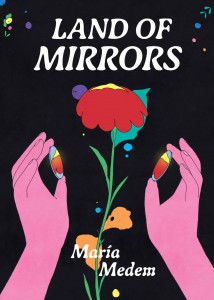
Land of Mirrors by Maria Medem, translated from the Spanish by Aleshia Jansen and Daniela Ortiz, Drawn & Quarterly, 2025
Review by Marcel Krueger
María Medem is one of Spain’s leading contemporary illustrators, with work published in The New York Times, Business Week, It’s Nice That, Die Zeit and many more. Now, Land of Mirrors—the English translation by Aleshia Jensen and Daniela Ortiz of her graphic novel Por Culpa de una Flor—marks the artist’s first long-form publication in the Anglosphere.
Land of Mirrors tells the story of melancholic protagonist Antonia, who lives alone in a deserted town with a pack of dogs and yearns for company. One day she discovers a flower, and caring for it daily gives her purpose and routine. Trying to prevent it from withering away and dying, Antonia sets out with a traveler from the titular Land of Mirrors; on the way, she continually discovers (more) beauty in nature, music, and, finally, the company of others.
A beautiful amalgamation of art and narrative, Land of Mirrors adheres at times to classical composition techniques familiar to graphic novels (or comics, as my inner child insists on calling them), lined out by legendary American (comic) writer Wally Wood in his “22 panels”; there are extreme close-ups, open panels, reflections, three stages of action in a single panel, and so on. But at the same time, Medem happily throws all of that out of the window, and instead of discrete, even frames, the reader is treated to multiple expanses of beautiful landscapes or closeups of flowers in bloom, all without visual noise or overlaid text.
At over three hundred pages without anything resembling quickened movements, this is a slow book in the best sense. Reflections and inner monologues are given time to develop and fizzle out while Antonia explores a mellow surrealist landscape of pastel colors—which often reminded me of French sci-fi writer and illustrator Mœbius’s works, but without the grit and the blood. Land of Mirrors offers a breathing space for anyone willing to engage with its meditated progression, a counter-balance to the increasingly frantic media environments we encounter elsewhere on the daily. This is a fable for our times: reflective, introspective, and without any moral insistence—perhaps except to occasionally stop and smell the roses.
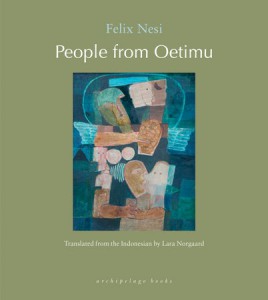
People from Oetimu by Felix Nesi, translated from the Indonesian by Lara Norgaard, Archipelago Books, 2025
Review by Eamon McGrath
Felix Nesi’s People from Oetimu is a novel shaped like a fractal. It opens at a moment of intense drama in Oetimu, a remote town on the border between West and East Timor, before leaping backwards a quarter century to offer a kaleidoscopic history of all the factors leading to the work’s contemporary moment. Each chapter pulls the reader inexorably into ever more backstory, all setting the stage for its opening scene, where a group of men sit chewing betel nuts and watching the 1998 World Cup.
Epic in scope, the novel traces the story of several characters implicated in this scene. At the center are Sergeant Ipi, a police officer, and Silvy, a precocious high school student, but the narrative encompasses an ever-expanding cast, including a lascivious Catholic priest, a colonial Portuguese administrator, a Timorese rebel bent on revenge, and a predatory dukun.
Nesi’s Timor is laced with magical realism, and his prose is richly sensual: “The orchids blooming from a half-dead, dusty jackfruit tree looked like little nipples.” With many Indonesian words preserved in Lara Norgaard’s translation, the narration evokes the oral language of storytelling. One man is described as “the kind of character you hear about all the time in folktales,” and just as in a fairy tale, Oetimu could be any town in Timor: “neither too busy nor too quiet, not too big, not too small.”
But as elsewhere in reformasi-era Indonesia, Timor is restive, and Oetimu lies at the fault line between the west and the ongoing bloodshed in the east. Violence reverberates throughout the novel, one act of cruelty begetting another. With outside powers vying for control of Timor and its resources, the island bears the traces of its colonizers: Dutch, Portuguese, Japanese—and now Indonesian. One character asks about an unfamiliar flag, only to be told: “That’s the Indonesian flag. . . Now we’re part of Eastern Indonesia.” Under Suharto’s dictatorship, corruption, oppression, and propaganda simply go by new names.
History repeats itself as a cycle of violence. In the novel’s present day, Timor is still viewed with derision from Java, and Indonesian is only the latest language to be imposed on the island. “Foreigners kept coming one after the other, but none of them had any interest in learning his language,” one character thinks. Last year, the Indonesian presidential victory went to a former general accused of crimes against humanity in East Timor, suggesting that the vicious cycle is far from over.
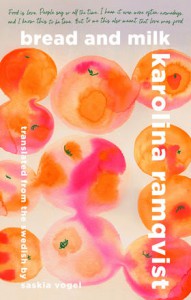
Bread and Milk by Karolina Ramqvist, translated from the Swedish by Saskia Vogel, Coach House Books, 2025
Review by Rosalia Ignatova
Karolina Ramqvist’s Bread and Milk, translated by Saskia Vogel, is an introspective memoir that explores the intricate connections between food, memory, and identity. Beginning with the narrator’s formative years, Ramqvist describes how the absence of her frequently preoccupied mother and the presence of her constantly cooking grandmother heightened her dependence on food as a substitute for love and security. As she recalls, “I had turned to food because it gave me everything I wanted and needed, but the older I got, the clearer it became how short-lived the effect was.” What follows is a reflection on the dominant role food played in shaping her understanding of affection and belonging: “I wanted to fill myself up until there was no room for anything else.”
This central tenet of Bread and Milk resonates with the themes from Dr. Gary Chapman’s international bestseller The 5 Love Languages, in which he explores the ways people give and receive love: words of affirmation, gifts, acts of service, quality time, and physical touch. Some experts have since suggested a sixth universal language: food—which combines all five senses and affectionate expressions, making it a powerful means of connection and care. In Ramqvist’s telling, however, food is a double-edged sword of love, harboring both nurturing and destructive powers. While her descriptions of meals are rich in sensory detail, giving cultural insights into Swedish food and family relationships, they gradually unveil the increasingly sinister nature of the young woman’s relationship with food, beginning with seemingly harmless childhood preferences and evolving into a full-blown compulsion.
While reading the second half of the book, I was reminded of Piglet by Lottie Hazell, which also examines food as a coping mechanism. However, while the novel takes a darkly humorous and fictional approach, portraying a woman’s unraveling after a shattering revelation, Ramqvist’s memoir offers a slower, more contemplative, and occasionally far more disturbing journey, revealing the roots of her eating disorder within the context of her family dynamics and personal insecurities. Overall, Bread and Milk stands out for its raw honesty and offers a poignant exploration of the ways we seek sustenance—both physical and emotional—through food, the essential material of our survival.
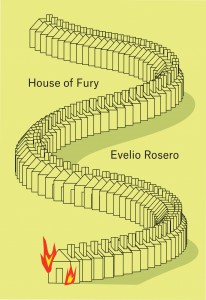
House of Fury by Evelio Rosero, translated from the Spanish by Victor Meadowcroft, New Directions, 2025
Review by Xiao Yue Shan
Chekhov would’ve been mesmerized. In lieu of a single gun, Evelio Rosero sets up the contents of an entire armory. Building the intricate, involute procession of a single terrible night, the Colombian writer braids the many threads of his story with a candor and a knowingness that always hints towards the devastation to come. The fact that House of Fury still manages to astound, then, is a testament to Rosero’s finesse of the macabre, his merciless indictment of his nation’s brutal history, and his utter disregard for narrative comforts.
It is April 10, 1970, and in one of Bogotá’s most lavish properties, the Supreme Court magistrate Ignacio Caicedo and his wife, Alma Santacruz, are throwing an extraordinary celebration for their anniversary. A veritable feast has been prepared, the vast territory of the house is fitted with ornament, and guests are due to arrive in the hundreds—friends and acquaintances, colleagues and subordinates, musicians and priests, family immediate and extended. From the very beginning, however, small cracks begin to form in the polished veneer: an unexpected pregnancy announcement, the presence of a bellicose brother, a love affair comes to an end. . . And soon these minute domestic events come to be dwarfed by increasingly destructive and horrific developments—an aggressive mule, a sexual assault, a predatory monsignor—which Rosero continues to expertly stack and elaborate, constructing a ghost structure of cruelty, carelessness, and vice that soon overlays the Caicedo household in a sickening claustrophobia of human malice.
Encompassing the civil war of 1948-1958 as well as the resultant internal conflict that lasted until the peace agreement of 2016 (though some would argue that it persists to this day), Colombia’s La Violencia was notoriously convoluted, atomized, and enduring, driven by left-wing guerrilla organizations, paramilitary units, international influences, drug cartels, and negligent governments. Sociologists and analysts attempted and failed to pin the messy brutality to some conceptual, thinkable framework, compiling enduring societal fractures and countless open wounds, while on the ground, murder, rape, and disappearance simply became a daily familiarity for the populace. This same chaotic and rhizomatic scheme is mirrored in House of Fury, which directs its many players with grave purpose, illustrating the collision of personal motives and coincidence, the catastrophic consequences of accident and rashness, the cascading domino-fall of motions being set, and the arbitrariness of life in a realm of indiscriminate violence. Rendering the sprawling Caicedo property with a rigorous eye for detail and tirelessly following up on his enormous cast (Victor Meadowcroft’s fastidious translation warrants much admiration), Rosero creates a synecdoche of Colombia that fiercely condemns the wasted years, the aimless bloodshed, the impotency of justice.
In the novel’s opening section, a proclamation is made: “[T]here is only one justice, and it travels in one direction, and while it’s true that Colombian justice may limp and limp and never arrive, one day, sooner or later, it would arrive, let there be no doubt about that. . .” Yet one of Rosero’s most striking qualities is his resistance to fairness and his willingness to test our moral platitudes, reminding us that justice is always unidimensional, and may never lead to completion. The party is filled with the deranged, the corrupt, the criminal, the borderline insane, and the prurient. Those who have a taste for comeuppance may even find something to relish—but as the reality of a sadistic ruthlessness is brought to bear, even the most cynical among us might find themselves thinking: does anyone deserve this?
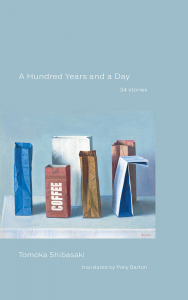
A Hundred Years and a Day by Tomoka Shibasaki, translated from the Japanese by Polly Barton, Stone Bridge Press, 2025
Review by Xiao Yue Shan
Transcendent moments in literature are often cultivated from something sublime, divine, or otherwise so spiritually resonant that all familiarity is stripped from us, and a more extraordinary schematic—timeless, unrooted, inhuman—takes its place. Italo Calvino did it with attentive magic; Jon Fosse did it with linguistic hypnotism; Mercè Rodoreda did it with ardent sensuality; and in Tomoka Shibasaki, we find a writer who does it by accentuating narration’s omniscience. Instead of our accustomed notion of story, which is to point the individual in some direction and towards some end, Shibasaki’s simple, spare tales do not rely on personal desire, impetus, or choice. Her prose is interested in the totality—the murmuration instead of the single body in flight—and thus breaks down the borders of experience entirely, reminding us that we are but one element amidst a vast, ever-flowing current.
A Hundred Years a Day is a collection of thirty-four pieces, translated with great sensitivity by Polly Barton, in which Shibasaki snowglobes the world and its frenetic momentums in quiet, profound observation; the result is an observation of constant, absolute change. Though these pieces are rife with different characters, events, and interactions, they are all unified in a single direction towards the future. Relationships begin and end, buildings go up and down, the years pass and pass, but nothing is privileged over anything else. These stories are not written to humanize time; instead, they follow time’s happening.
The first indication comes from the pieces’ titles, which read more like summaries:
The tale of a man who gets off a train at a random shop and decides to live there, finds a job in a liquor shop in the nearby shopping arcade, meets a girl at one of the bars that the liquor store delivers to, and then, after the girl leaves, moves away to live somewhere else.
This is the exact plotline from beginning to end, and like all the other works that accompany this one, nothing is described as particularly momentous, there are no emotional peaks or valleys. Time is the metronomic beat by which we measure it, as opposed to a product of our perception—the chronos over the kairos. As such, the narratives are not themselves faithful to any one position; sometimes they follow a single person, sometimes a building, sometimes a book, sometimes the growings of a wisteria. Moving through them, one is made to consider the perfect square boxes of calendar dates, the mandated number of hours in a day, the universal consensus that a pace must be set for our species’ movements.
What happens in the span of a hundred years? Neighborhoods are demolished and rebuilt, families grow and shrink, many journeys are taken, as are many returns. There is no single eye that can bear witness to it all, yet we are made occasionally privy to the fact that our careless world—unaware of our happiness or sadness, our ambition or our failure, our aging, our letting go—is actually inclusive of us: that the ego which defines our aloneness is inextricable from the world’s procession, which brings all of the past to arrive with us at each present moment. Such invisible connections only ever occasionally make their way to the surface, when we are temporarily given reprieve from our self-centred nature. The feeling of moving into a house and thinking about who lived there before; of something crossing many generations to be in your hands; of wondering what an old friend is doing at this very moment; of reading one of Tomoka Shibasaki’s stories.
Marcel Krueger is a German-Irish writer, editor, and translator living in Berlin. His essays have been published in the Guardian, Notes from Poland, 3:AM, Przekrój, Süddeutsche Zeitung, and The Irish Times, amongst others. He is the co-editor of Elsewhere: A Journal of Place, and has published five non-fiction books in English and German, among them Berlin: A Literary Guide for Travellers (written together with Paul Sullivan, IB Tauris 2016) and Babushka’s Journey: The Dark Road to Stalin’s Wartime Camps (IB Tauris, 2018).
Rosalia Ignatova is an English teacher and translator. She translates fiction, poetry and children’s literature between Bulgarian and English, with a keen interest in contemporary voices.
Eamon McGrath is a writer based in Brooklyn. He writes about literature from Southeastern Europe @balkanbooks.
Xiao Yue Shan is a poet, writer, editor, and translator.
*****
Read more on the Asymptote blog:

